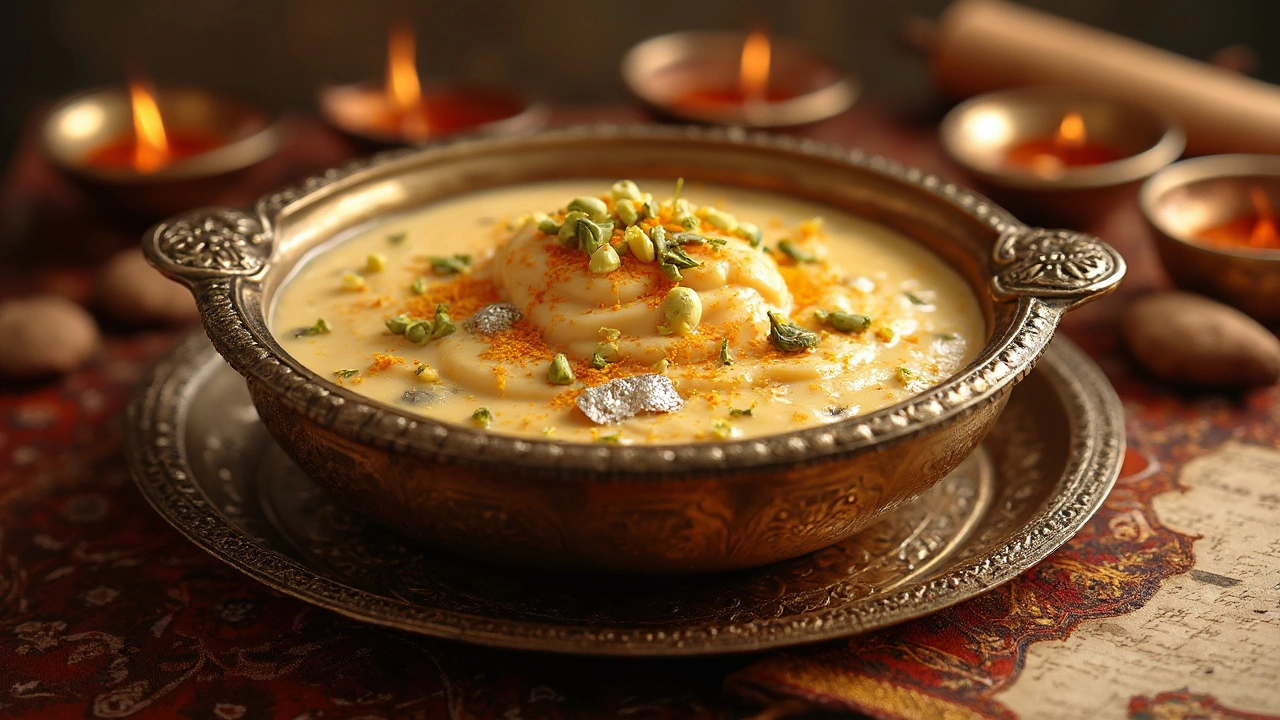Traditional Desserts: Classic Indian Sweets You Can Make at Home
If you grew up with sweets like gulab jamun or payasam, you already know the magic of Indian traditional desserts. These treats are more than just sugar – they carry stories, regional spices, and the comfort of home cooking. Below, we’ll break down where these desserts come from, how to enjoy them without overdoing the sugar, and give you two easy recipes you can try right now.
History and Origins
India’s sweet heritage dates back centuries. Ancient Indian sweets such as payasam (a rice‑based pudding) were first mentioned in temple inscriptions, showing that desserts were part of religious rituals long before they hit your grandma’s kitchen. Over time, each region added its own twist – Kerala’s palada payasam with coconut milk, Punjab’s buttery gajar halwa, and Bengal’s fragrant rasgulla made from fresh chhena.
A fascinating fact is that some of the oldest mithai, like peda and ladoos, were originally prepared for royal courts. They used locally sourced jaggery, ghee, and spices such as cardamom and saffron, giving each bite a distinct aroma that still defines Indian desserts today.
Healthier Twists and Easy Recipes
Many people think Indian sweets are off‑limits for a healthy diet, but a few smart swaps can keep the flavors intact while cutting down excess sugar. Replace refined sugar with jaggery or coconut sugar for a deeper, caramel‑like taste. Use low‑fat milk or almond milk instead of full‑cream milk, and try baking instead of deep‑frying whenever possible.
Below are two quick recipes that honor tradition yet stay practical for busy kitchens.
1. Quick Jaggery Payasam (Rice Pudding)
Ingredients: ½ cup short‑grain rice, 2 cups almond milk, ¼ cup grated jaggery, ½ tsp cardamom powder, a handful of cashews, a pinch of saffron.
Method: Rinse the rice and soak for 15 minutes. In a saucepan, bring almond milk to a boil, add the rice, and simmer on low heat for 15‑20 minutes until the rice softens. Stir in jaggery until it melts, then add cardamom, saffron, and toasted cashews. Serve warm or chilled.
2. Light Coconut Gulab Jamun
Ingredients: 1 cup milk powder, ¼ cup whole‑wheat flour, 2 tbsp desiccated coconut, ¼ cup low‑fat milk, 1 tsp baking powder, oil for greasing, 1 cup jaggery syrup (jaggar + water).
Method: Mix milk powder, flour, coconut, and baking powder. Add milk gradually to form a soft dough. Roll small balls, coat lightly with oil, and bake at 180°C for 12‑15 minutes until golden. Warm the baked balls in jaggery syrup for 5 minutes, letting them soak lightly. Enjoy the soft, coconut‑infused version of a classic favorite.
These recipes show that you don’t need a professional kitchen to enjoy traditional desserts. A few pantry staples and a little patience are enough to recreate the flavors your grandparents loved.
Remember, the key to lasting enjoyment is moderation. Pair a small portion of any sweet with a cup of spiced tea or a fresh fruit salad, and you’ll keep the taste buds happy without the sugar crash.
Ready to bring a piece of Indian heritage to your table? Choose a dessert that sparks your curiosity, try one of the recipes, and let the aroma of cardamom, jaggery, and coconut fill your home. Traditional desserts are a celebration of culture – and now they’re also a simple, health‑friendly treat you can share with family and friends.
Oldest Indian Dessert: Unwrapping the History of Kheer
Curious about the oldest dessert in India? This article digs into the rich history and surprising origins of kheer, the timeless Indian sweet rice pudding. Discover what makes kheer unique, its journey across the centuries, and how it shaped Indian food culture. Plus, get helpful tips if you want to try making this iconic treat at home. Explore interesting facts that connect kheer to ancient festivals, rituals, and royal kitchens.
